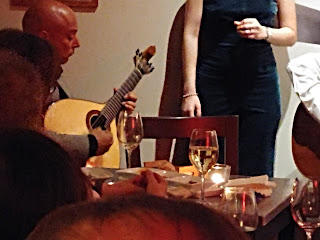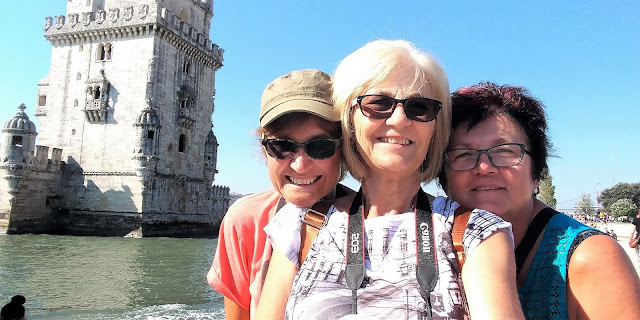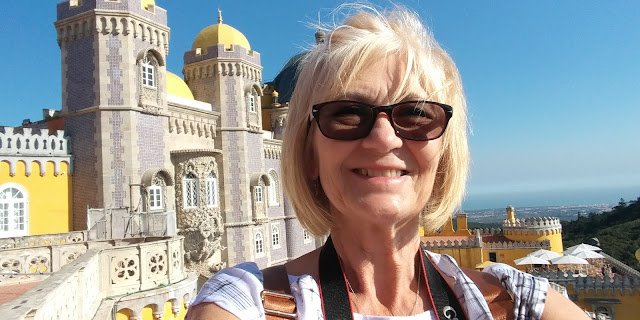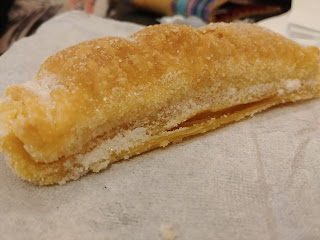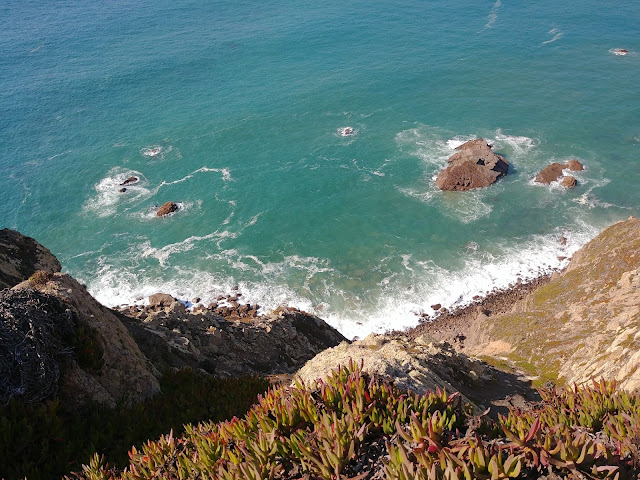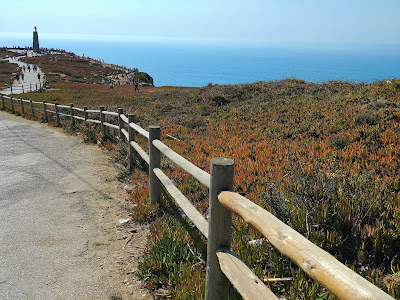Lisbon. What you must see...
We had five days to explore beautiful Lisbon. We knew we wanted to take one day to see
Sintra, which meant we had four days to see what Lisbon was all about.
So, here is our list of the must-see places to visit.
1.
The Squares or Pracas.
Lisbon, like most of the old European
cities, is a mosaic of neighbourhoods centred around squares or Pracas, each
with its own towering statue or monument.
For example, Praca dos Restauradores – wide walking
street lined with restaurants.
-
Praca da Figueira (Fig Tree Square) – pop into the Confeitaria Nacional---- for one of their famous Nata tarts before hopping on
the vintage tram



- Largo do Carmo – around the ruins of the old Carmo
Convent and the Archaeological Museum
2.
Alfama from St. Jorge’s Castle to the Cathedral
Se.
While the newer areas of Lisbon
are built to a visionary urban plan, Alfama is still a winding medieval town with
narrow, hilly streets and small sparse houses crammed together in every bit of
space. The hill streets tumble downward toward the Ribiera. This area of the
city dates back to the 1100’s when it was ruled by the Arabs.
The castle Castelo S. Jorge sits
atop the highest hill of Lisbon. There had been fortifications here since a couple hundred years B.C.,
but the castle itself was built in the 11th centurty by the Moors.
Here the elite lived and its walls continued around to protect the city of
Alfama. In 1147 the Christian kings invaded and took over the castle, adding a
Royal Palace where they lived. The castle is high above Lisbon and visible from
most vantage points in the city.
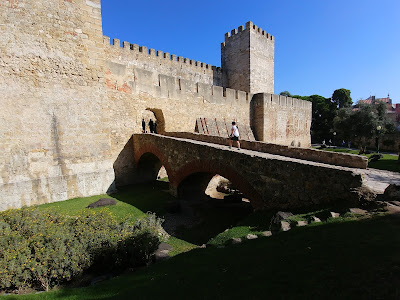
The castle is in remarkable
condition, given it is almost 1000 years old. It offers a drawbridge over a
now-dry moat and 10 spectacular towers with stone stairways drawing you up to a
spectacular 360 degree view.
All around the castle and the
Alfama area are churches – beautiful towering steeples and domes standing out
above the mish mash of houses. Most are adorned with the beautiful blue and white tiles that are prevalent throughout Portugal. Each depicts a scene that is significant to the church, the area or the time.
 But none
is as impressive as the Cathedral Se (Holy Cathedral). Damaged in the
earthquake it was rebuilt in a fortress style, as opposed to the over-the-top
gilded and elaborate cathedrals you see in most of Europe. It was also originally built in
1150 after the Christian kings defeated the Moors, on the site of the existing mosque.
But none
is as impressive as the Cathedral Se (Holy Cathedral). Damaged in the
earthquake it was rebuilt in a fortress style, as opposed to the over-the-top
gilded and elaborate cathedrals you see in most of Europe. It was also originally built in
1150 after the Christian kings defeated the Moors, on the site of the existing mosque.
Wandering through the massive
formation, it is easy to image the life of the elite that lived within these
walls.
We climb the many stone stairways of the towers, walk along the parapets and take in the breathtaking view over the rooftops, out to the river.
I
imagine standing there, with the peasants bustling in the tiny, crammed
cottage-like homes below…. Oh, got a litte carried away there… I would have
been the peasants!
Following the narrow, winding
streets and pathways of Alfama will lead you back to the Baixa, or more modern
(1700’s) city centre.
3.
Comercio Square and the Triumphal Arch.
Rue Augusta is a wide pedestrian
street paved with white limestone. It is bright and clean. Shops and
restaurants line the street and locals and visitors alike pass through. As Rua
Augusta reaches the riverfront a magnificent arched gate leads to Praca
Comercip, or Comercio Square.
 This is the Triumphal Arch, or
Arco da Rua Augusta. It was completed in 1873 and its beautifully sculpted
frescoes depict important historic events and people of Portugal.
This is the Triumphal Arch, or
Arco da Rua Augusta. It was completed in 1873 and its beautifully sculpted
frescoes depict important historic events and people of Portugal.
Through the arch, the square
leads to the banks of the Tagus River. This is the square that once housed the
Royal Palace and was completely destroyed by the earthquake and tsunami of 1755.
It has been rebuilt but it no longer holds the Royal Palace. It is completely
fringed by beautiful brilliant yellow buildings which house outdoor cafes,
restaurants and shops. Artisans display their work in the shade of the
archways. At each end, towering over the
river are monumental stone turrets.
In the centre of the square is a
massive statue of King Dom Jose I mounted on his horse.
Following along the Rua Arsenal,
running parallel to the river, we made our way to the Praca do Municipio and its old Market.
This was the traditional farmer’s market where producers came to sell their
fresh vegetables, fruits, meat, flowers, etc. However, with today’s modern supermarkets
the market was struggling. In an effort to revitalize the market and draw
people back to it, The Time Out Market took over half of the space.

 The mood is happy, lively, energetic
and definitely urban and modern. Long tables fill the space offering seating on
high stools. It is late afternoon and it is packed. We grab 3 stools as someone
vacates and make our way to a central wine bar.
The mood is happy, lively, energetic
and definitely urban and modern. Long tables fill the space offering seating on
high stools. It is late afternoon and it is packed. We grab 3 stools as someone
vacates and make our way to a central wine bar.
The hard part is trying to
decide, from the myriad of offerings, what to eat. We each chose one kiosk and
bring back our plate of goodies to share.
5.
From Food to Fado
Fado music is very typically
Portuguese. It is described as the voice of the Portuguese soul. Born in the 1800's it is still strong and popular in the Bohemian areas of Alfama and Bairro Alto.
Fado really is Portugal's version of the blues, powerful vocals dripping with heartache and yearning and relying heavily on the unique and beautiful round- shaped 12 string guitar.
We really wanted to experience authentic Portuguese Fado and chose Fado in a Box. This club-type restaurant/bar/show was located in the Bairro Alto, an area of Lisbon known as the entertainment area. Fado in a Box has been around for decades but recently updated and renovated. Every day at 5:00 they offer a Fado show with appies and wine.
We walked in without tickets or reservations but they are able to accommodate us, their last table they tell us.
Fado really is Portugal's version of the blues, powerful vocals dripping with heartache and yearning and relying heavily on the unique and beautiful round- shaped 12 string guitar.
We really wanted to experience authentic Portuguese Fado and chose Fado in a Box. This club-type restaurant/bar/show was located in the Bairro Alto, an area of Lisbon known as the entertainment area. Fado in a Box has been around for decades but recently updated and renovated. Every day at 5:00 they offer a Fado show with appies and wine.
We walked in without tickets or reservations but they are able to accommodate us, their last table they tell us.
They ushered us in, past
posters and photos of their most famous singer, Amalia Rodrigues who sand
there for 35 years and became one of the best known Portuguese Fado artists of all
time. They take us down stairs to their show room - small, warm and welcoming like a basement jazz bar.
We nibble on appies, sip
Portuguese wine and listen to the music and song that is traditional Fado. It was a great evening.
6.
Monastery of Jeronimos and the Belem Tower
Belem is the treasure of Lisbon.
It is from this spot on the Tagus River that Henry the Navigator departed for
his discovery of Africa. And where Vasco da Gama’s caravans left for India. And
where Cabral left for Brazil, all events that changed the world and brought
great wealth and status to Portugal.
Hopping on the very crowded Tram
15 we make our way to the Monastery of Jeronimos, a masterpiece built in the 1500’s to celebrate
the Portuguese discoveries. On this very site sat the chapel where Vasco da
Gama prayed before departing on his epic voyage to discover the sea route to
India and open up that trade route.

It is massive and stunningly beautiful. We stand in line waiting, only so many people allowed at once. We pay our Euros and enter. One side holds the Church, still in use... in fact a mass was in process. The other, the cloister or monastery and the Museum.

It is indeed an impressive
structure. We make our way up narrow winding stairways equipped with a two
minute timer. There is an light at the top of the doorway with an up arrow and
a down arrow.
The timer buzzes, the up arrow
lights up. People hurry up the narrow one-way stairwell. At 2 minutes the
buzzes sounds again and everyone must exit into the nearest floor, emptying the
stairwell so that on the next buzz people can come down. It is an interesting
and highly effective way to manage large numbers of people in a very small
confining space. (Obviously this was not part of the original structure, but
added to manage the many visitors)
We make our way up to the top.
The view across the city and across the water is well worth the climb. In the
distance we see the 24th of April bridge, built by, and resembling,
San Francisico’s Golden Gate bridge.
One last stop in Belem… we have
been told no visit to Belem is complete without visitng to Pasteis de Belem…. For one of their famous Natas—a delicious
Portuguese custard tart. The line-up is
well down the block but we have been forewarned that it will move quickly.
And it does. They have it down to a science.
In not time at all I am in.
Till number 1: I’ll have 3 please. Pay my 3 Euros.
Till 2: hand me a pretty little box with 3 tarts, and I’m out.
And it does. They have it down to a science.
In not time at all I am in.
Till number 1: I’ll have 3 please. Pay my 3 Euros.
Till 2: hand me a pretty little box with 3 tarts, and I’m out.
And, yes, they were worth the
wait.
It has been a long hot day, a
good day but we are tired. The line up for the return tram is not inviting. Instead
we hail a tuktuk driver who agrees to take us back instyle.
Lisbon is a beautiful city,
interesting modern and ancient at the same time. We loved everyting about it,
but these were a few of our favorites.










